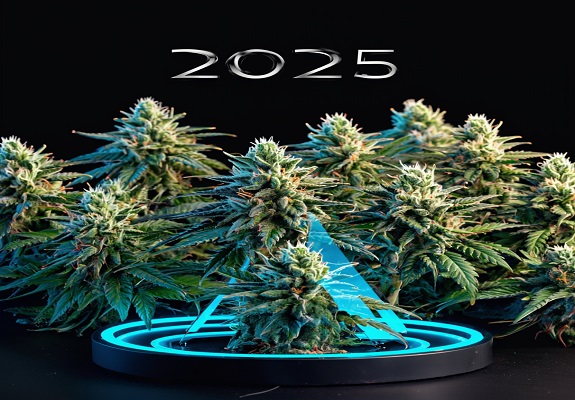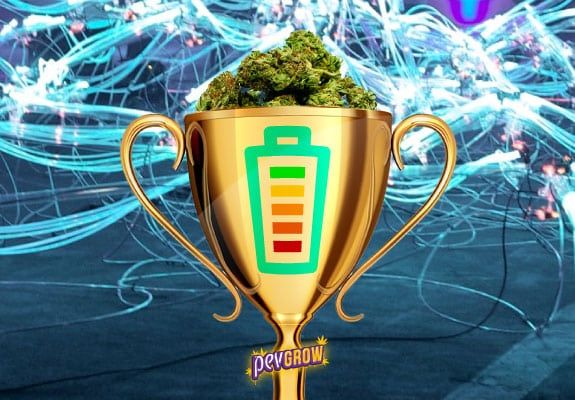

In constant struggle for the regulation of cannabis, mainly in the medicinal field.
08-12-2023 09:00:00 - Updated: 8 December, 2023
In the world of indoor cultivation, choosing the right lighting equipment is crucial. Today, we’ll take a look at two of the most popular LED panels on the market: the Spider Farmer SF 4000 and the Mars Hydro 3000. Both have earned an enviable reputation among growers, but which one is the best for your needs? Let’s break it down.
⭐ Comparative Table between Spider Farmer SF 4000 Vs Mars Hydro 3000
| Feature | Spider Farmer SF 4000 | Mars Hydro 3000 |
|---|---|---|
| Power | 450W | 300W ±10% |
| Input Voltage | AC 220-240V | 100-277 Volts |
| Weight | 9.0 kg | 4.4 Kg |
| HPS Equivalent | 900w | 550w |
| Vegetative Coverage Area | 1.5 m x 1.5 m | 1.2 x 1.2 meters |
| Flowering Coverage Area | 1.2 m x 1.2 m | 1 x 1 meter |
| Diodes | Samsung lm301b, Osram Red and IR | Samsung LM301B and Osram 660 |
| Number of Diodes | 1212 | 792 |
| Size | 65cm x 54cm x 6cm | 58 x 52 x 8 cm |
| Spectrum | 660nm, 3000K, 5000K & IR 760nm | – |
| Efficiency | 2.7 umol/j | – |
| Rated Value | 1156 umol/s | 845 umol/m²s |
| Yield | 2.5 grams/watt | 2.5 grams/watt |
| PPFD | 2.7 umol/j | 845 umol/m²s |
| BTU | – | 1023 |
| Certifications | – | ELT, CE, UKCA, RoHS, DLC, IP65 |
⛳ Power and Efficiency
The Spider Farmer SF 4000 stands out with its 450W power, surpassing the Mars Hydro 3000 which operates at 300W. This difference translates into higher light output, with the SF 4000 being equivalent to a 900w HPS. In terms of efficiency, the SF 4000 offers 2.7 umol/j, an impressive figure that promises healthy plant growth with reduced energy consumption.
✨ Coverage Area
In vegetative growth, the SF 4000 illuminates an area of 1.5 m x 1.5 m, while in flowering it covers 1.2 m x 1.2 m. On the other hand, the Mars Hydro 3000 covers an area of 1.2 x 1.2 meters in vegetative and 1 x 1 meter in flowering. Here, the SF 4000 has a slight advantage, offering wider coverage, ideal for larger-scale crops.
👌 Diode Quality
The SF 4000 utilizes Samsung lm301b, Osram Red, and IR diodes, with a total of 1212 diodes. This set ensures a full and efficient spectrum for all stages of cultivation. In comparison, the Mars Hydro 3000, although it does not specify the type of diodes, offers solid performance with a PPFD of 845 umol/m²s.
📖 Light Spectrum
Both panels offer a full spectrum, crucial for optimal plant development. The SF 4000 includes wavelengths of 660nm, 3000K, 5000K, and IR 760nm, while the Mars Hydro 3000, though not detailing its specific spectrum, meets the basic needs of plants.
📲 Design and Construction
The SF 4000 measures 65cm x 54cm x 6cm and weighs 9 kg, a considerable size that justifies its wide coverage. On the other hand, the Mars Hydro 3000 is more compact, with dimensions of 58 x 52 x 8 cm and a weight of 4.4 Kg, making it ideal for smaller spaces or for those looking for more manageable equipment.
➕ Yield and Rated Value
The SF 4000’s rated value is 1156 umol/s, compared to the 845 umol/m²s of the Mars Hydro 3000. This implies that the SF 4000 is capable of producing more light per watt consumed, which can translate into more efficient and rapid growth of plants.
🚀 Certifications and Safety
The Mars Hydro 3000 features several certifications such as ELT, CE, UKCA, RoHS, DLC, IP65, ensuring its quality and safety. While the SF 4000 does not specify its certifications, its popularity and positive user reviews support its reliability.
✅ Advantages and Disadvantages of Spider Farmer SF 4000
Advantages:
- Higher Power: With 450W, the SF 4000 provides greater light intensity, ideal for larger crops.
- Wider Coverage Area: It covers a larger area in both vegetative and flowering phases, suitable for larger spaces.
- High-Quality Diodes: It uses Samsung lm301b, Osram Red, and IR diodes, known for their efficiency and durability.
- Greater Number of Diodes: With 1212 diodes, it offers a more uniform and effective light distribution.
- Enhanced Full Spectrum: Includes 660nm, 3000K, 5000K, and IR 760nm, providing a full spectrum for all growth stages.
- High Efficiency: With an efficiency of 2.7 umol/j, it is one of the most efficient LEDs on the market.
- High Rated Value: Its rated value of 1156 umol/s ensures superior light intensity.
Disadvantages:
- Heavier Weight: At 9 kg, it is heavier, which can make handling and installation more difficult.
- Larger Size: Its dimensions can be inconvenient in smaller spaces.
- No Specified Certifications: Unlike its competitor, it does not specify safety and quality certifications.
🔥 Advantages and Disadvantages of Mars Hydro 3000
Advantages:
- Compact Design: Its size and weight make it ideal for smaller spaces and for those looking for easily manageable equipment.
- Reduced Energy Consumption: With a power of 300W, it uses less energy.
- Solid PPFD: It offers a PPFD of 845 umol/m²s, suitable for efficient plant growth.
- Yield per Watt: With a yield of 2.5 grams/watt, it is efficient in terms of production per energy consumed.
- Extensive Certifications: It comes with certifications such as ELT, CE, UKCA, RoHS, DLC, IP65, ensuring its quality and safety.
- More Economical: Generally, it is more affordable than the SF 4000.
Disadvantages:
- Lower Power: Its power of 300W may not be sufficient for growers with higher lighting needs.
- Smaller Coverage Area: It offers a smaller coverage compared to the SF 4000, limiting its use to smaller spaces or smaller-scale crops.
- Fewer Diodes: It does not specify the number or brand of its diodes, which could affect the uniformity and quality of light.
- No Full Spectrum Specification: It does not detail its light spectrum, which can create uncertainty about its efficacy in all cultivation stages.
Each model has its strengths and areas for improvement, making the choice largely dependent on the specific needs and preferences of each grower.
🎯 Conclusions
Both LED panels have their strengths. The Spider Farmer SF 4000 shines with its power, efficiency, and wide coverage, being ideal for serious growers looking to maximize their production. On the other hand, the Mars Hydro 3000 is an excellent option for those seeking more compact and manageable equipment, without sacrificing quality.
In the end, the choice depends on your specific cultivation needs. If you have a larger space and are looking to maximize your yield, the SF 4000 is probably your best bet. But if you are working in a smaller space or have a tighter budget, the Mars Hydro 3000 will not disappoint.
👾 Frequently Asked Questions
How far should the Spider Farmer light be from the plants?
The optimal distance varies depending on the growth stage of the plants. For seedlings, it’s recommended between 60-75 cm; for vegetative stage, between 45-60 cm; and for flowering stage, between 30-45 cm. It’s important to adjust the height according to the plants’ response and avoid light stress.
Is the Spider Farmer 4000 better than the Mars Hydro 3000?
It depends on your specific needs. The Spider Farmer SF 4000 has higher power and a larger coverage area, which is ideal for larger spaces or growers looking to maximize their yield. On the other hand, the Mars Hydro 3000 is more compact and consumes less energy, making it an excellent choice for smaller spaces or for those looking for energy efficiency.
What is the actual energy consumption of the Spider Farmer 4000?
The Spider Farmer SF 4000 has an actual energy consumption of approximately 450W. Despite its high power, it is known for its energy efficiency, thanks to its high-quality LED diodes.
How far should the Mars Hydro 3000 light be from the plants?
Just like with the Spider Farmer, the recommended distance varies according to the plant’s growth stage. For seedlings, around 60 cm; for vegetative phase, between 40-60 cm; and for flowering phase, between 30-40 cm. It’s vital to observe the plants’ development and adjust the height to prevent light stress or burns.





